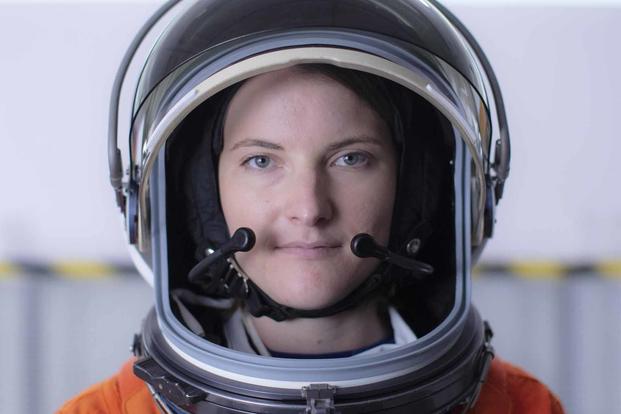Lt. Cmdr. Kayla Barron, one of the first women to serve on a Navy submarine, is now one step closer to being one of the first women to walk on the Moon.
Barron, 33, who commissioned as a Navy officer in 2010, was selected by NASA out of a pool of approximately 18,000 people to join the 2017 astronaut candidate class.
Barron is no stranger to firsts. When the Navy first began the process of integrating women into submarine crews in 2010, during her senior year at the Naval Academy, Barron became a member of the first class of women commissioned into the submarine community.
"I think I've been lucky to be in the right place at the right time for some of these big changes, the submarine force being a great example. They opened the community to women during my senior year at the Naval Academy, allowing me to volunteer to serve in that community," Barron said.
Read Next: Here's How Much the Pentagon Has Spent Thus Far to Treat Transgender Troops
She would ultimately serve on the Ohio-class ballistic submarine Maine, where she'd complete three patrols in the job of division officer.
For her first spaceflight, Barron will serve as a mission specialist for the SpaceX Crew-3 mission to the International Space Station. The mission is slated for launch "no earlier than Sunday Oct. 31," according to a NASA Commercial Crew Program post.
In addition to the upcoming SpaceX Crew-3 mission this fall, Barron is also set to take part in NASA's Artemis program, which aims to "send the first woman and next man to the Moon" by 2024.
For Barron, though, it's not about being the first, it's about striving for her personal best.
"I don't think I really like to latch onto being the first," she said. "For me, I want to find the opportunities that will be the most challenging, the most developmental and will allow me to serve in the best way I can given what I think I can bring to the table."
Barron, who still serves on active duty in the Navy, said her service with the submarine force gave her the confidence to apply to be an astronaut.
"My experiences on the submarine were really formative, and were ultimately what gave me the confidence to even think that I could apply at all to become an astronaut, let alone eventually become one," she said.
Following two years of training to build basic skills and create a strong foundation for astronaut candidates, including Survival, Evasion, Resistant and Escape, or SERE, training with the Navy in Redington, Maine, Barron became a NASA astronaut.
"I definitely rely on my experience from the submarine force, every single day in my role at NASA," Barron said. She had a breakthrough in conceptualizing space, she said., when she started thinking of the space station like a submarine.
"The parallels are really endless," she said. "In my opinion, just like you can imagine, you know human beings trying to live and work in an environment where human beings aren't supposed to live and work, whether that's under the surface of the ocean or in the vacuum of space. So you face a lot of really similar challenges."
As one of two submariners in the astronaut office, Barron said she brings unique experience and an "operational mindset" to the upcoming mission.
"It really takes ... an understanding of how to bring everybody's knowledge, experience and skill sets to the table in order to make strong decisions operationally that not only keep everyone safe but also accomplish all the goals you're trying to make," Barron said. "Really understanding how to bring that team together is something that I really think I can contribute to our mission, that operational understanding and experience."
As Barron continues her work as an astronaut, she said that she is particularly inspired by the women who paved the way for her.
"Here at NASA, we walk the halls with our heroes," she said. "They're amazing women who were the first to command a space shuttle or the first woman to command the space station. It feels like I'm just a part of that lineage and I'm really standing on the shoulders of people who've paved the way in order for me to be there. I've just felt really lucky that people have seen the value and my experience and perspective and have really given me the opportunity to challenge myself and continue to grow in these various environments."
Related: Army Astronaut Demonstrates 'Weightless' ACFT at International Space Station










